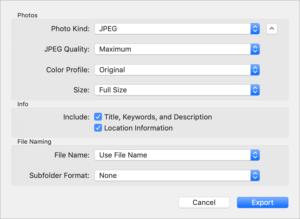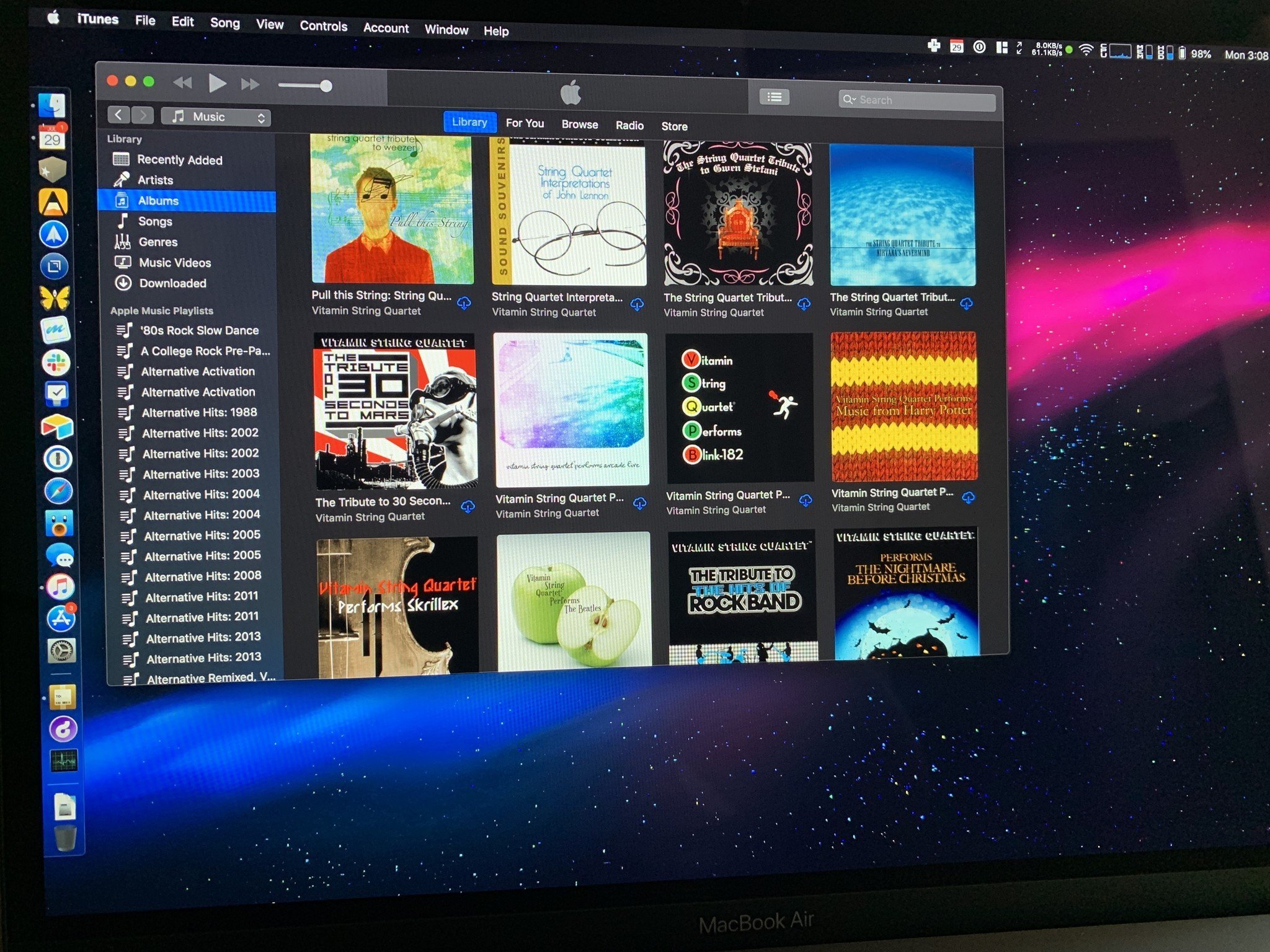Click the Use as System Photo Library button. If you open a second or different library in the Photos app, and you haven't designated it as the System Photo Library, other applications will use photos from the original System Photo Library. Hold down the Option key when you open Photos to see which library is set as the System Photo Library. If you're a die-hard Lightroom user, iCloud Photo Library won't really help you — it's dependent on Photos for iOS and Photos for Mac. Photos for Mac does support external image editors like Photoshop and Pixelmator, and you can set up automation workflows to move your favorite Lightroom snaps to Photos.
- How Big Can A Mac Photos Library Be
- Mac Photos Maximum Library Size
- Mac Photos Maximum Library Sized
- Mac Photos Maximum Library Size Limit
- Mac Photos Maximum Library Size Limit
Apple: Strictly limit macOS Photos library size using 'Optimize Storage'?Helpful? Please support me on Patreon: th. If you have a permissions issue with your library, you might be able to resolve the issue by using the Photos library repair tool. If the volume isn't formatted APFS or Mac OS Extended (Journaled), or has been used for Time Machine backups but hasn't been erased, this checkbox will either not be present, or won't be selectable after unlocking.
No matter how much space you have on your Mac, one day, you may see a “Your disk is almost full” notification. Even if it seems like there is no app or program that would take a considerable amount of storage, the large files may be hidden deep down in your Mac’s memory. Keep reading to discover how to locate such files on your Mac and delete them for good.
Scan the most obvious place
When looking for large files on their Macs, users often start scanning a bunch of folders stored on their machines. But, usually, the most common destination of all large files is the Downloads folder. You may automatically download thousands of files and forget to remove them. So, checking the Downloads folder on your Mac may help you find lots of forgotten large files and documents that you don’t need anymore.
How Big Can A Mac Photos Library Be
Looking for the large items may take some time. Free tools, like CleanMyMac X, can accelerate the process by scanning your Mac’s memory and detecting large files. The only task left for you will be to remove the found files all at once.
Find large files using Finder
Another way to search for large files is by using search filters in Finder. It can help you locate the biggest files on your Mac. Here’s how to find large files using Finder:
- Open Finder.
- Find the Search field in the top right and click it.
- Click the Settings symbol and select Show Search Criteria.
- In the list of search filters on the left, choose Other.
- In the window that appears, select File Size and click OK.
- In the second space, select Is greater than and enter the size in the third space.
- Choose KB, MB, or GB in a final filter field.
Remember to select This Mac to get a full list of results. You will then see all files which size is greater than you defined. Look through the found documents and remove unnecessary items that take too much space on your Mac.
Although, this method has certain disadvantages. Finder doesn’t give you a full picture of the large files stored on your Mac. It shows only single files, excluding large folders that comprise a lot of smaller items.
It’s also unclear which files you can safely delete without the risk of removing important documents. Finder neither provides any additional information about files nor shows which folder the file belongs to. So, it’s difficult to decide whether the large file is important or not.
Continue reading to discover how to find the largest files on your Mac using other methods.
Find large files using the Storage Management app
Another solution is to use the built-in Storage Management app.
- Choose Apple menu.
- Select About This Mac.
- In the window that appears, click Storage. Here you can see how much free storage you have and view the amount of space used by different categories.
- Click Manage.
- As the Storage Management app opens, select Documents.
- Browse the Large Files to delete those you don’t need.
Click any file to see its path at the bottom of the window. The Storage Management app also shows the exact size of each document as well as the date you opened it last.
Apple provides helpful recommendations at the top left to help you optimize your storage. Here you can choose to store all your files in iCloud, remove large files like movies and TV shows, turn on Empty Trash Automatically, and reduce clutter.
This method is great for those who don’t have a lot of large files on their Mac. But, if you tend to keep many files on your machine, you may consider using the Storage Management app tiresome.
How to find biggest files on Mac via Terminal

Another way to locate large files on your Mac is to use Terminal. Although some users find commands complicated, if you use them correctly, you can find anything on your Mac. So, you can locate the biggest files on your device, just like that:
- Go to Utilities and open Terminal.
- Execute find command. If you want to locate all files bigger than 1G under the /home directory, for example, type
find /home -size 1G. - To delete the files enter
find /home -type f -name *.avi -size +2G -exec rm {}
This command will remove all AVI files that are greater than 2GB under the /home directory.
Using this command, you can also limit your search, setting size filters. Then your command will look like this: find /home -size +30M -size -100M. This command will locate all files that are greater than 30MB but less than 100MB.
Locate and remove large files using CleanMyMac X
If you have enough time, you can look through all data stored on your Mac using the methods described above. In case you want to speed up the process, CleanMyMac X can prove useful. Thanks to its Large & Old files feature, you can look at the bigger picture of all large files found on your Mac and delete them altogether.
Here’s a short instruction on how to find and delete large files using CleanMyMac X:
- Download the free version of CleanMyMac X and open the app once it’s installed.
- Click the Large & Old Files tab.
- Run a quick scan.
- CleanMyMac X will show you all files stored on your Mac. You can sort files based on their size, type, and access date, to see the large items that can be removed from your Mac.
- Check the boxes for the files you want to delete and click Remove.
Using CleanMyMac X, you can remove all unnecessary files quickly and make some space for more important documents.
So, these were some simple methods of how to view all files on Mac and delete them. You can either use Finder, the Storage Management app, or Terminal to find the biggest files on your Mac and clean up your machine of them.

Apple likes to hide the fuss of technical choices in its software. That includes Photos, which provides a lot of sophisticated functions with a friendly veneer. However, when it comes to exporting images, you might not know which option to take because so many choices appear quite similar.

To follow along, select any image in Photos. Now, in the File > Export menu, you see two options: Export 1 Photo and Export Unmodified Original for 1 Photo.
The second submenu item is easier to explain first. When you import media into Photos, it retains the original. Any changes you apply to it are stored as a series of modifications. In the library catalog and when you view an image, you see the modified version. Choose to export an unmodified original, and Photos copies exactly what was originally imported. It’s useful that the app retains the original, instead of only storing modified forms, in case you want to discard all your edits or export an image to edit again in another piece of software.
Most people routinely use the choice above it, however: Export X Photo(s). When you select that option, Photos offers an export dialog that has a lot of menus. (If you don’t see all the menus in the figure, click the downward-pointing arrow, and it will open to reveal more choices)
No matter what format the image was in when imported, you may select among PNG, JPEG, and TIFF in the Photo Kind menu. With PNG and TIFF exports, all the detail of the original is preserved, and there’s no option for lower quality.
With JPEG, however, you can pick an option in JPEG Quality that reduces file size by having less perfect fidelity to the original image. The lower quality you choose, the blurrier and more pixellated an image appears when you’re looking at an image at 100 percent.
Quality is distinct from resolution: Resolution describes how much information was captured in the image; it’s a description of the level of detail. Quality determines how crisp or authentic to the original the exported file appears. You can have an image with enough resolution to make a billboard from, but the quality could be so low that a lot of detail is lost. (Many image-editing packages provide an interactive export dialog that previews an image as you adjust settings for quality and resolution, including the estimated resulting file size in bytes.)
If you started with a lower-quality JPEG, exporting it as High or Maximum won’t magically make it more detailed—the original fidelity is lost. But if your original file is a Raw image (which captures raw sensor information from a camera) or was created as a high-quality JPEG, you should consider High or Maximum when exporting if you’re trying to produce a new image close to the original.
Mac Photos Maximum Library Size
For all the image export formats, you can pick resolution from the Size menu. Full Size preserves the resolution of the imported image. The smaller sizes are appropriate typically for low-throughput situations—like a low-speed cell or Wi-Fi network—or ones in which data transfer is expensive or limited.
If you have a particular resolution target for an image, you can also pick Custom from the Size menu and set the maximum height or width, or the maximum dimension of either height or width. That’s useful if you were given a target size for an image that will be placed on a Web page or used in a layout for digital or offset printing.
This Mac 911 article is in response to a question submitted by Macworld reader Sara.
Ask Mac 911
Mac Photos Maximum Library Sized
We’ve compiled a list of the questions we get asked most frequently along with answers and links to columns: read our super FAQ to see if your question is covered. If not, we’re always looking for new problems to solve! Email yours to mac911@macworld.com including screen captures as appropriate, and whether you want your full name used. Every question won’t be answered, we don’t reply to email, and we cannot provide direct troubleshooting advice.
Note: When you purchase something after clicking links in our articles, we may earn a small commission. Read ouraffiliate link policyfor more details.

Mac Photos Maximum Library Size Limit
- Related: